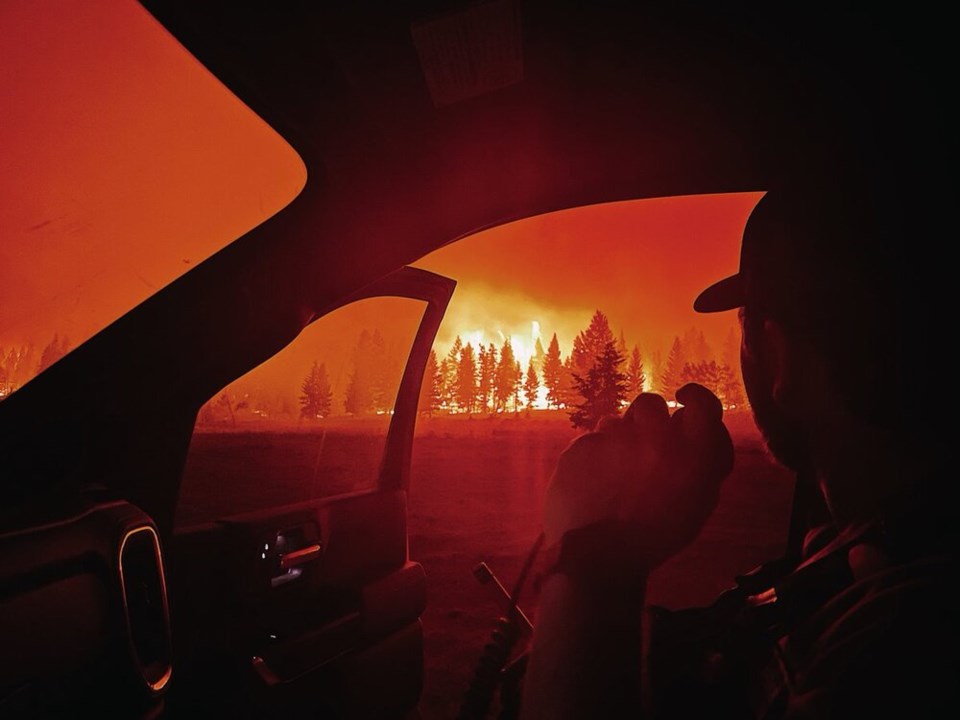The public would be surprised to know that wildfires and COVID-19 have a lot in common.
The coronavirus disease is a contagion; it spreads from person to person through a vulnerable population. COVID-19 spreads through entire populations because it is a novel virus, and we have little natural immunity to it.
Wildfire behaves similarly.
Fire burns as a contagious process and can spread across western forest landscapes because they are in a highly vulnerable state and contain abundant fuel.
The debate over how to end the pandemic has centred on two strategies: natural herd immunity versus vaccination. According to epidemiologists, herd immunity is achieved when a large proportion of the population has been exposed to the virus and in response, develops antibodies to the disease. When a large proportion of the population has achieved this state of natural immunity, it significantly slows the spread of the virus through the remainder of the population.
Unfortunately, achieving herd immunity through transmission of the virus means that many infected individuals will not be able to develop antibodies and will instead get very sick or die. Developing and administering a vaccine to a large proportion of the population is intended to achieve the same result but without the excess deaths and societal impacts.
Mitigation of the wildfire crisis centres on the same two strategies.
Herd immunity, in the context of wildfires, is achieved by creating large patches throughout the landscape containing very little fuel or fuel that is too moist to burn. Grasslands, shrublands, wet meadows, aspen forests, woodlands, harvested areas that have been prescribed burned, and areas recently burned are all examples of patches that contain very little fuel.
When a wildfire encounters these patches, especially if there are many of them, fires burn less intensely, slow down and are more easily contained. This is the landscape of the Indigenous peoples of North America who proactively managed with fire.
If we stick with our current forest management and fire suppression paradigm, and climate change continues unabated, we will actually reach herd immunity in a few short decades.
Year after year of these large, destructive wildfires will eventually convert many forests to grasslands, shrublands and woodlands. However, to reach this state of “herd immunity” B.C. will lose a large proportion of its forests.
The other option is to “vaccinate” the landscape against large scale, destructive fire by building back in the network of inflammable patches generated by Indigenous burning at a scale adequate to limit the destructive potential of large wildfires.
Whether we’re managing a crisis centred on a dangerous virus or uncontrollable and highly damaging wildfires, our actions should be guided by a proactive management strategy. COVID-19 presented society with an existential threat – a crisis of such magnitude that it threatens our very existence.
Governments and individuals responded with actions needed to get the crisis under control, including subsidizing businesses and personal incomes. All of this was for the common good and it was the right management philosophy. Wildfires, greatly exacerbated by climate change and forest management practices, are similarly an existential threat.
In the coming decades wildfires are predicted to result in 100s to 1,000s of premature human deaths a year due to smoke (disproportionately affecting children). They will also emit millions of additional tonnes of greenhouse gases into the atmosphere. They will cost our economy and society billions of dollars (e.g., suppression, businesses losses, infrastructure damage, emotional health, real estate losses, ecosystem services losses, etc.). Yet, government has not treated this crisis as if it is a significant threat to society – and it should.
Governments (provincial and federal) urgently need to develop a strategic plan that centres on solutions to the wildfire crisis at the appropriate scale, is informed by wholistic and inclusive policies, is supported by long-term sustainability, and recognizes social justice as a key component.
For more detail on what that strategic plan looks like, the government should look to a recent white paper presented by collaborators from academic institutions, the Indigenous community, government and industry.
Robert W Gray, Wildland Fire Ecologist, R.W. Gray Consulting, Ltd.
Susan Prichard PhD, Research Scientist, University of Washington
Mathieu Bourbonnais, PhD, Assistant Professor, University of British Columbia Okanagan




